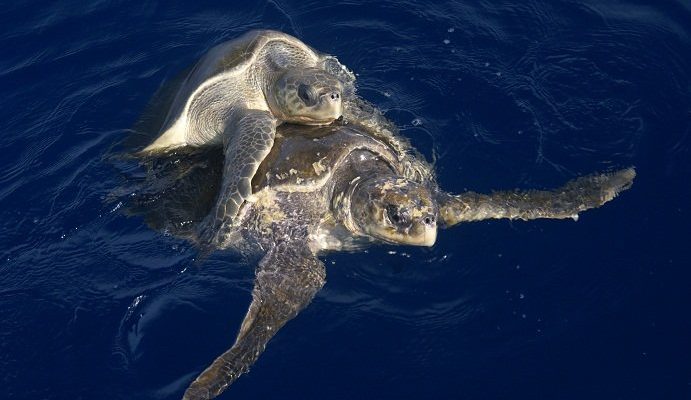
Breeding is a critical part of the leatherback turtle’s life cycle and is full of unique behaviors and challenges. Like a well-rehearsed dance, each stage of reproduction is finely tuned to ensure the survival of this remarkable species. Let’s dive deeper into how leatherback turtles reproduce, where they nest, and the challenges they face.
Life Cycle of Leatherback Turtles
Understanding the **life cycle** of leatherback turtles is essential to appreciating their breeding habits. These turtles have one of the longest lifespans among reptiles, often living for about 50 years or more. They start life as tiny hatchlings, making their way to the ocean after breaking free from the eggs buried in the sand.
Once in the ocean, leatherbacks go through several growth stages. Juveniles are often found in warm coastal waters, feeding on jellyfish and other soft-bodied marine organisms. As they mature, they migrate thousands of miles, often crossing entire oceans. This journey is not just a leisurely swim; it’s a fundamental part of their **breeding cycle**. Adult females return to the nesting sites of their birth, continuing the cycle that has been repeated for generations.
Nesting Behavior
Breeding typically occurs in warmer months when adult females return to the beaches to nest. Here’s how it usually works:
1. **Choosing a Nesting Site**: Females select specific beaches based on a combination of instinct and previous experience. Comfortably moist sand and protection from tidal waves are crucial.
2. **The Nesting Process**: After digging a nest, she lays around 80-100 eggs, covering them with sand before heading back to the ocean. Each female can nest multiple times in one season, laying hundreds of eggs.
Nesting is a time-consuming effort, requiring immense energy. The journey back to the ocean can be perilous due to human activity and predators. This is why protecting their nesting habitats is vital for their survival.
Egg Development and Hatching
Once laid, the eggs undergo crucial development. Leatherback turtle eggs take about 60 days to hatch. Imagine those tiny hatchlings squirming inside their shells, sensing the warmth of the sun above them.
Temperature plays a significant role during this period, as it can determine the sex of the hatchlings. Warmer sand typically produces females, while cooler sand produces males. Once the time is right, the hatchlings break free and instinctively make their way to the ocean, often facing hazards like predators and human interference along the way.
It’s a high-stakes race for survival. Only a small percentage of hatchlings make it to maturity, which emphasizes the importance of protecting the nesting environment.
The Role of Temperature
Temperature is a crucial factor, especially regarding breeding and development. The **sand temperature** can influence not just the sex but also the health of the hatchlings. Warmer conditions can lead to dehydration, while cooler conditions can slow development. This delicate balance highlights why climate change poses a significant threat to leatherback populations.
Challenges in Breeding and Reproduction
Despite their adaptability, leatherback turtles face multiple challenges. One major issue is **habitat loss**. Coastal development and pollution are destroying nesting beaches, making it harder for females to find suitable sites.
Additionally, **predation** by animals like raccoons and birds can impact egg survival rates. And let’s not forget about human activity—light pollution can confuse hatchlings as they make their way to the ocean, leading them in the wrong direction. It’s heartbreaking to think about these obstacles, but awareness is the first step in addressing them.
Conservation Efforts
Various organizations are working hard to protect leatherback turtles and their nesting habitats. Initiatives often include:
– **Monitoring nesting sites** to ensure they remain safe from disturbances.
– **Creating awareness campaigns** to educate the public about the importance of protecting these magnificent creatures.
– **Restoration efforts** to rehabilitate degraded nesting beaches.
These efforts are vital for increasing hatchling survival rates, but they require collaboration between communities, governments, and organizations to be truly effective.
The Importance of the Leatherback Turtle
Leatherback turtles play an essential role in our ecosystem. They help maintain jellyfish populations, contributing to the health of ocean ecosystems. Their presence indicates a healthy marine environment, and their decline can signal larger environmental issues that need addressing.
By focusing on breeding and reproduction, we can better understand what these turtles need to thrive. Protecting their nesting sites and supporting conservation efforts can help ensure these ancient mariners continue to grace our oceans.
Future of Leatherback Turtles
As we think about the future of leatherback turtles, it’s critical to remain hopeful and proactive. With continued effort and awareness, there’s a chance to reverse some of the damage done to their habitats.
Communities can get involved through beach clean-ups, awareness campaigns, or even by volunteering with local conservation groups. Every little bit helps. It’s about creating a sustainable future for these turtles and ensuring they can continue their incredible journey for generations to come.
In conclusion, the breeding and reproduction of leatherback turtles is a captivating aspect of their life cycle that reveals much about their incredible journey. From nesting behavior to hatching and the challenges they face, it’s a story of resilience and adaptation. As we learn more, it’s essential to remember that each small action can contribute to the survival of these magnificent creatures. So next time you find yourself near the ocean, take a moment to appreciate the wonders of nature—including the leatherback turtle and their vital role in our world.

